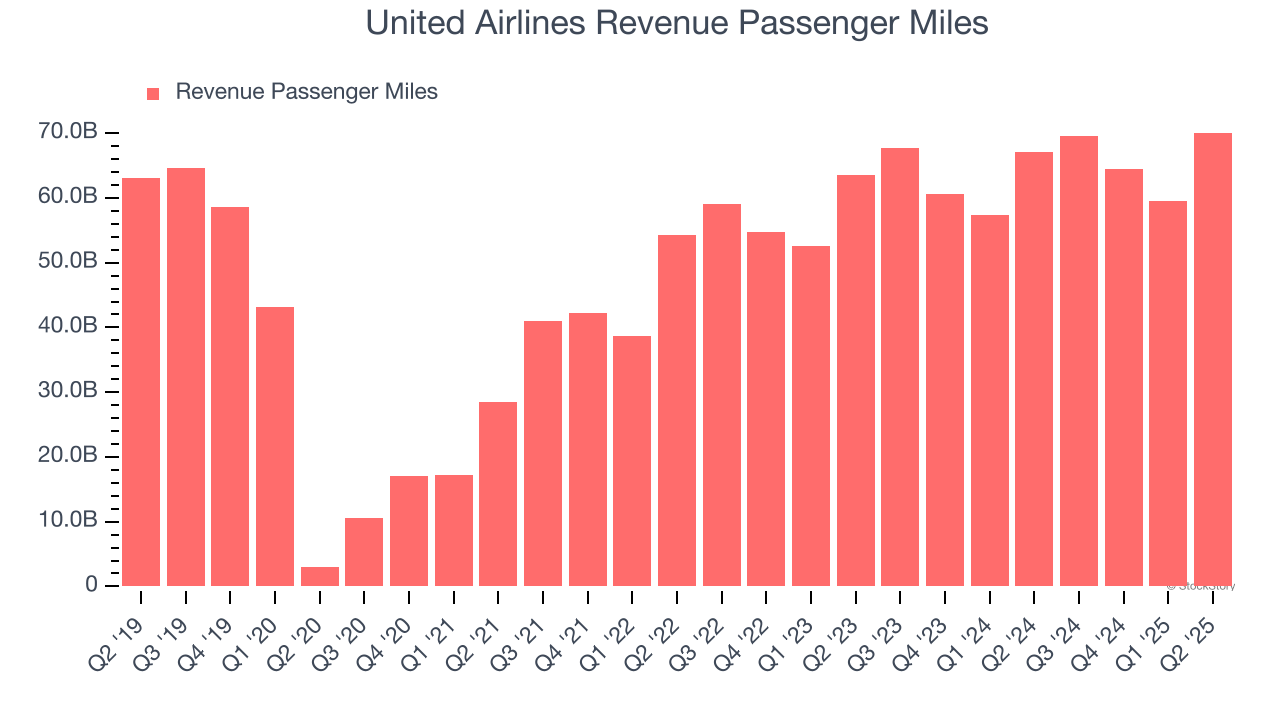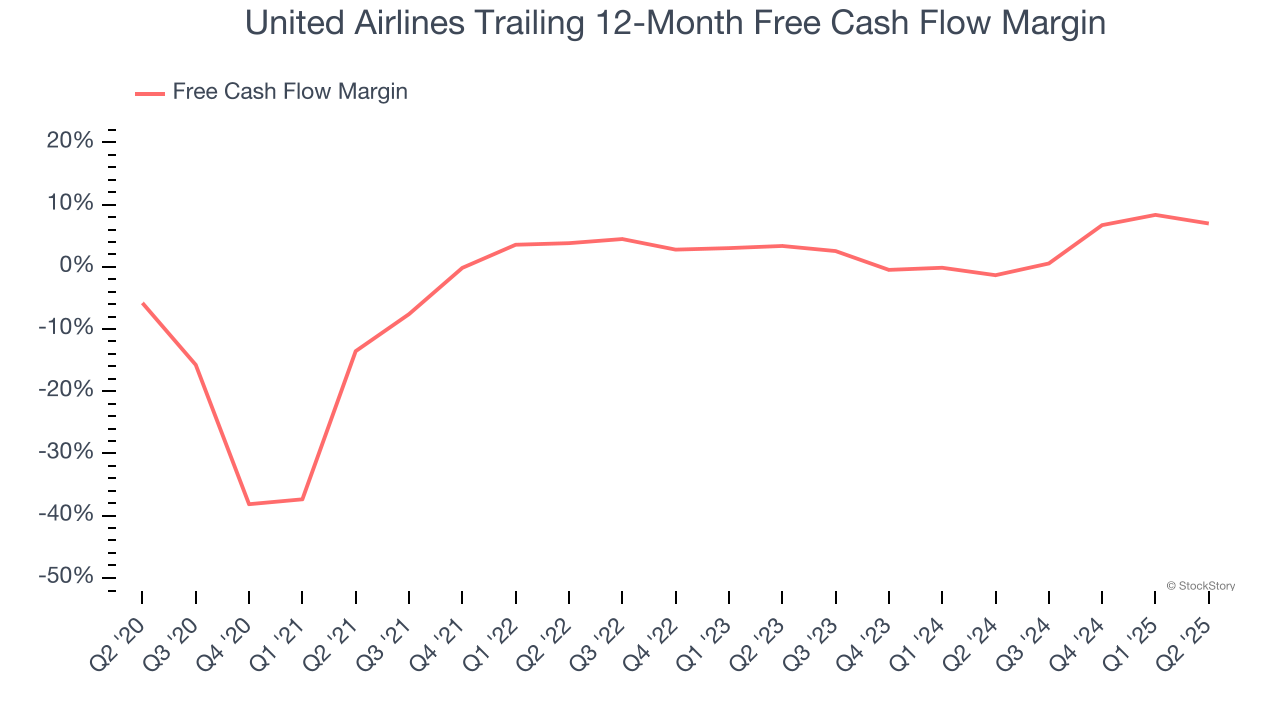
United Airlines currently trades at $99.20 per share and has shown little upside over the past six months, posting a small loss of 3.9%. The stock also fell short of the S&P 500’s 5.5% gain during that period.
Is now the time to buy United Airlines, or should you be careful about including it in your portfolio? Get the full breakdown from our expert analysts, it’s free.
Why Is United Airlines Not Exciting?
We don't have much confidence in United Airlines. Here are three reasons why you should be careful with UAL and a stock we'd rather own.
1. Weak Growth in Revenue Passenger Miles Points to Soft Demand
Revenue growth can be broken down into changes in price and volume (for companies like United Airlines, our preferred volume metric is revenue passenger miles). While both are important, the latter is the most critical to analyze because prices have a ceiling.
United Airlines’s revenue passenger miles came in at 70.09 billion in the latest quarter, and over the last two years, averaged 7.2% year-on-year growth. This performance was underwhelming and suggests it might have to lower prices or invest in product improvements to accelerate growth, factors that can hinder near-term profitability. 
2. Mediocre Free Cash Flow Margin Limits Reinvestment Potential
Free cash flow isn't a prominently featured metric in company financials and earnings releases, but we think it's telling because it accounts for all operating and capital expenses, making it tough to manipulate. Cash is king.
United Airlines has shown poor cash profitability over the last two years, giving the company limited opportunities to return capital to shareholders. Its free cash flow margin averaged 2.9%, lousy for a consumer discretionary business.

3. Previous Growth Initiatives Haven’t Impressed
Growth gives us insight into a company’s long-term potential, but how capital-efficient was that growth? A company’s ROIC explains this by showing how much operating profit it makes compared to the money it has raised (debt and equity).
United Airlines historically did a mediocre job investing in profitable growth initiatives. Its five-year average ROIC was 7.6%, somewhat low compared to the best consumer discretionary companies that consistently pump out 25%+.
Final Judgment
United Airlines isn’t a terrible business, but it doesn’t pass our bar. With its shares lagging the market recently, the stock trades at 9.1× forward P/E (or $99.20 per share). While this valuation is optically cheap, the potential downside is big given its shaky fundamentals. We're fairly confident there are better stocks to buy right now. Let us point you toward a safe-and-steady industrials business benefiting from an upgrade cycle.
Stocks We Would Buy Instead of United Airlines
Trump’s April 2025 tariff bombshell triggered a massive market selloff, but stocks have since staged an impressive recovery, leaving those who panic sold on the sidelines.
Take advantage of the rebound by checking out our Top 6 Stocks for this week. This is a curated list of our High Quality stocks that have generated a market-beating return of 183% over the last five years (as of March 31st 2025).
Stocks that made our list in 2020 include now familiar names such as Nvidia (+1,545% between March 2020 and March 2025) as well as under-the-radar businesses like the once-micro-cap company Tecnoglass (+1,754% five-year return). Find your next big winner with StockStory today.
StockStory is growing and hiring equity analyst and marketing roles. Are you a 0 to 1 builder passionate about the markets and AI? See the open roles here.






